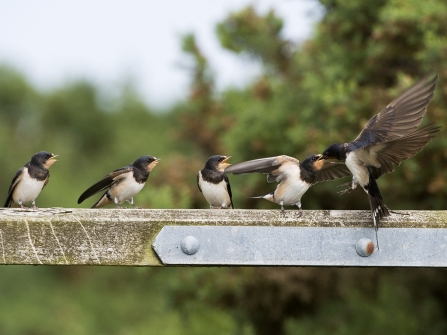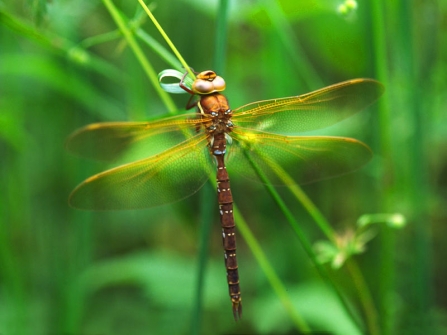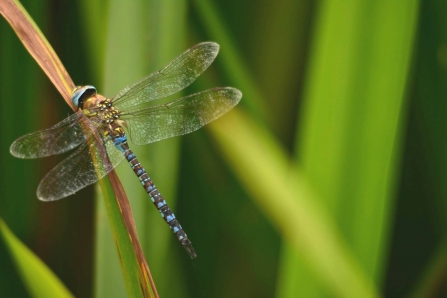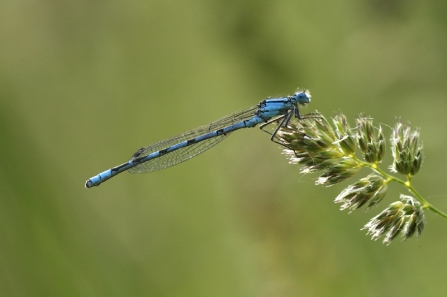Whilst our meadows might be turning golden brown now that most wild flowers have faded and the swifts may be well on their way back to Africa after their short stay to breed in the UK – there’s still plenty of wildlife to enjoy across the county.
Summer moves swiftly into autumn
(c) Sean Browne

Young swallows being fed - Photo by Mike Vickers
Swallows and martins are still flying acrobatically overhead and there should be many young birds to see and enjoy with some species rearing second or third broods. Butterflies will continue to be on the wing for many weeks yet when there’s a break in the showers!

Brown Hawker Dragonfly - Photo by Mike Vickers
Another group that can be enjoyed during the long hot days of summer are dragonflies. Unlike bird watching, where it’s best to be up early or moth watching which requires late nights at this time of year, dragonflies can be enjoyed at a reasonable hour – as long as the sun is shining. They use the sun’s rays to warm up and some species position their bodies like expert sun bathers to catch as much heat as possible. Whilst they can be encountered almost anywhere, from woods and heaths to meadows, they are most likely to be encountered close to their breeding habitat of ponds, pools and streams.
Whilst we see dragonflies in their expert ‘flying machine’ phase, most species actually spend a large part of their life-cycle underwater as voracious nymphs. Having spent many months or even years underwater, some species only fly for a few weeks - but once airborne, dragonflies remain fearsome predators and are extremely important in controlling numbers of mosquitoes and other flying insects.

Emporer Dragonfly - Photo by Bo Chetwyn
The first true dragonflies and damselflies emerged around 250 million years ago and there are over five thousand species, around 30 of which can be found in the UK.
British dragonflies come in a bewildering and beautiful range of colours, from the apple-green and blue of the emperor, to the bronze and chocolate of the brown hawker, so look out for them when you are out and about over the next few weeks.
Great places to see dragonflies include our larger wetland sites such as Skylarks, Besthorpe, Idle Valley, Attenborough and Daneshill Lakes, but smaller sites such as Wilford Claypit and Farndon Willow Holt may also throw up good sightings.
If you would like to find out more about Idle Valley or any of our other nature reserves across the county visit our nature reserves page.

Common Blue Damselfly at Attenborough Nature Reserve - Photo by Sean Browne

